The previous post Two Steps Forward. One Step Back. 1/2 Step Forward? covered mixed news on the power brake booster. While waiting for resolution on the brake booster I might as well tackle another job.
Air conditioning is vital. Yes, even in New England. When I got the Imperial I was told “the air conditioning was working – it just needs a recharge”. Yeah, right! This is one of the great lies of old cars, right up there with “it was running when it was parked” (20 years ago), “it just needs a tune-up” (meaning it is badly broken or completely worn out), and “it is rust free” (no such thing on an old car!).
The real story is that all the parts are there, the compressor turned freely and didn’t make unusual noises, and the compressor clutch engaged. These old Chrysler RV2 AC compressors are pretty well bulletproof, so the chances are good that there were leak(s) in the system that need to be fixed but it could be brought back to life.
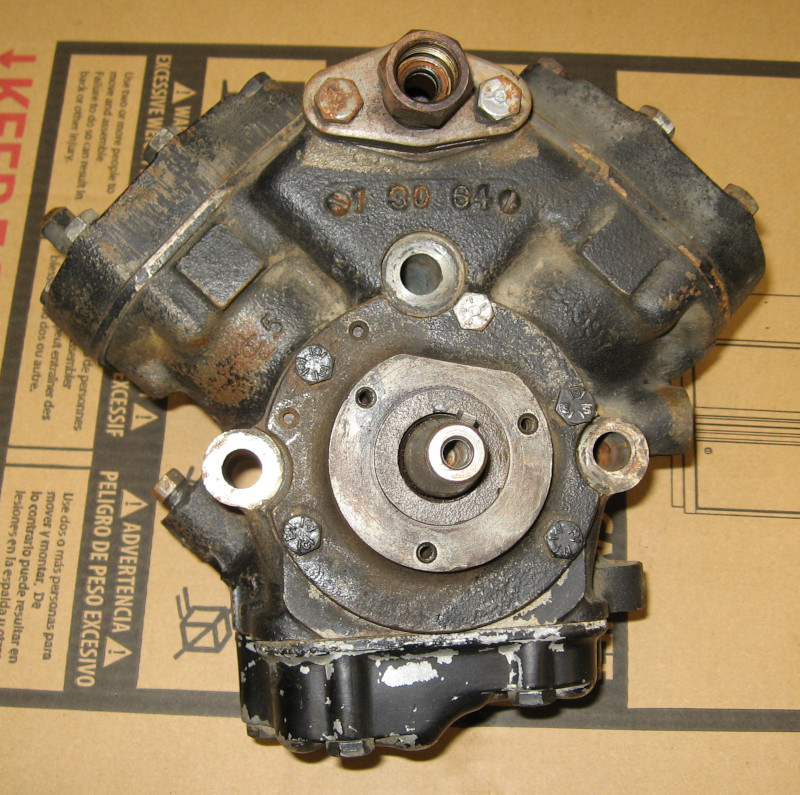
The plan of attack was to rebuild the compressor, replace the hoses, carefully tighten all the fittings, and see if it leaks. If no leaks are found, recharge with R134A refrigerant and enjoy cool driving.
The original plan was to send the compressor out to be rebuilt. However this is expensive, long lead times (8 -12 weeks), and very expensive shipping – the RV2 is about 30 lbs. of classic steel. Keep in mind that the AC compressor has to be installed to run the car – the belts for the alternator and water pump also run the AC compressor. I didn’t want to have the car out of commission for 2-3 months. Oh, who am I kidding – there are plenty of other things also keeping the car off the road!
A complete set of gaskets and seals for a rebuild is around $100, so I ordered those and had them sitting on the shelf. After all, “how hard can it be?”…
The first step was to pull the compressor off the car and take it over to the parts washer for a good cleaning.
Actually, the first step was to review the factory service manual and check YouTube videos to get an idea of what to do and to hopefully avoid mistakes. The RV2 is actually pretty simple, so it looked like I was good to go.
Pulling the heads was interesting. The gaskets were really stuck to the mounting surfaces – so thoroughly stuck that the gaskets themselves pulled apart! These old gaskets were really difficult to clean off. I ended up scraping with a razor blade and then cleaning up with a ScotchBrite Roloc on a die grinder.
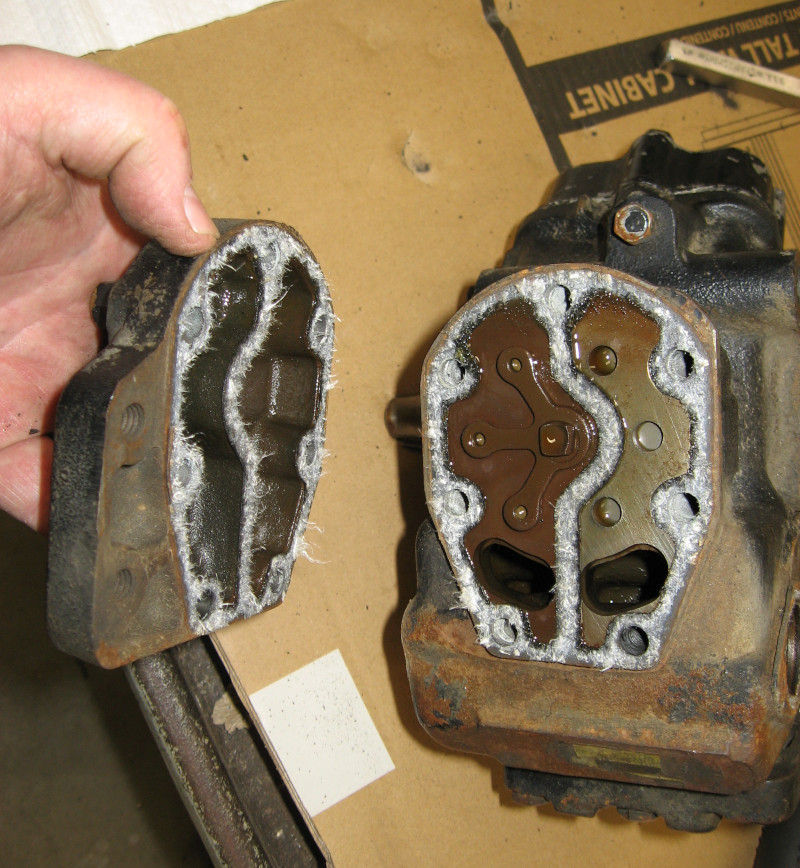
While the RV2 is simple there are still quite a few parts that need to go back in the proper places. All parts were layed out on a clean workbench in the order they were removed and maintaining the relationships between the parts. The parts were cleaned and checked for wear as they were removed; fortunately everything seemed reasonable – some wear, but still serviceable.
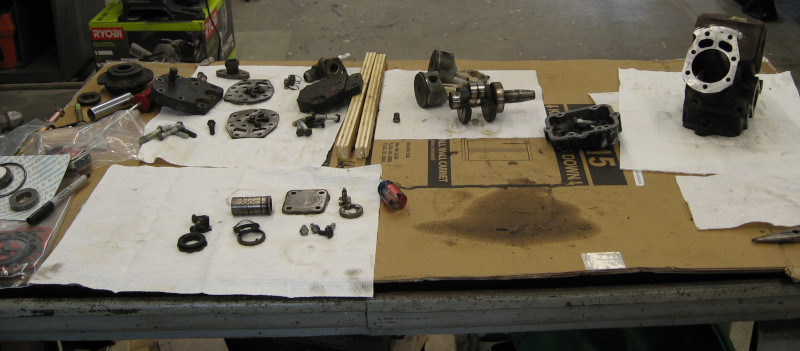
Reassembly was straightforward – basically reverse the disassembly process. All internal parts got a good coating of AC Oil to avoid a damaging dry start of the compressor. My torque wrenches got a good workout – proper torque is critical for the connecting rod bolts, the head bolts, and the sump pan bolts. The smaller torque wrenches were used – 1/4″ and 3/8″.
One interesting challenge involved the piston rings. These rings must be compressed to fit inside the piston bore. The proper tool for this is a ring compressor. Of course I did’t have a ring compressor for these small (roughly 2″) pistons. But I did have hose clamps! I’m sure this isn’t the recommended approach, but it worked to get the pistons back in the bores.
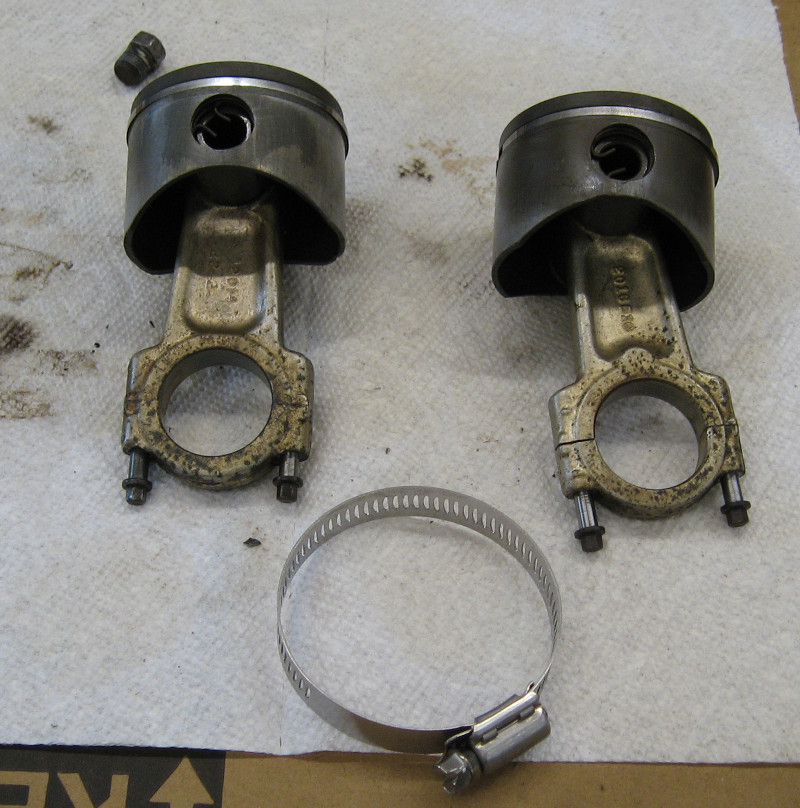
With the compressor back together it was time to scrub it thoroughly with PrepSol to remove all traces of AC Oil from the outside, prime it with etch primer, and hit it with a couple of coats of black paint. Then stick it back in the car and move on to trying to find someone to make new AC hoses.
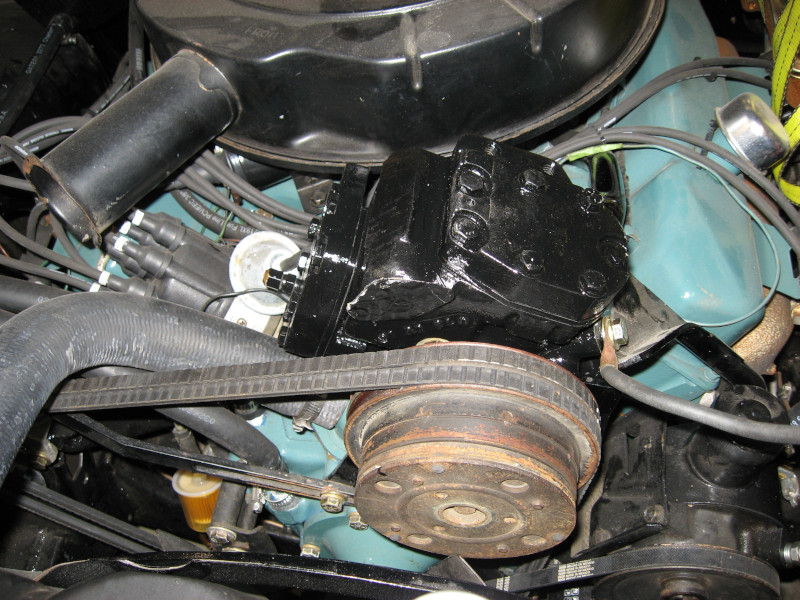
Next: the power brake booster shows up. Is the second time a charm? Find out in Stop It III plus More Good News.
